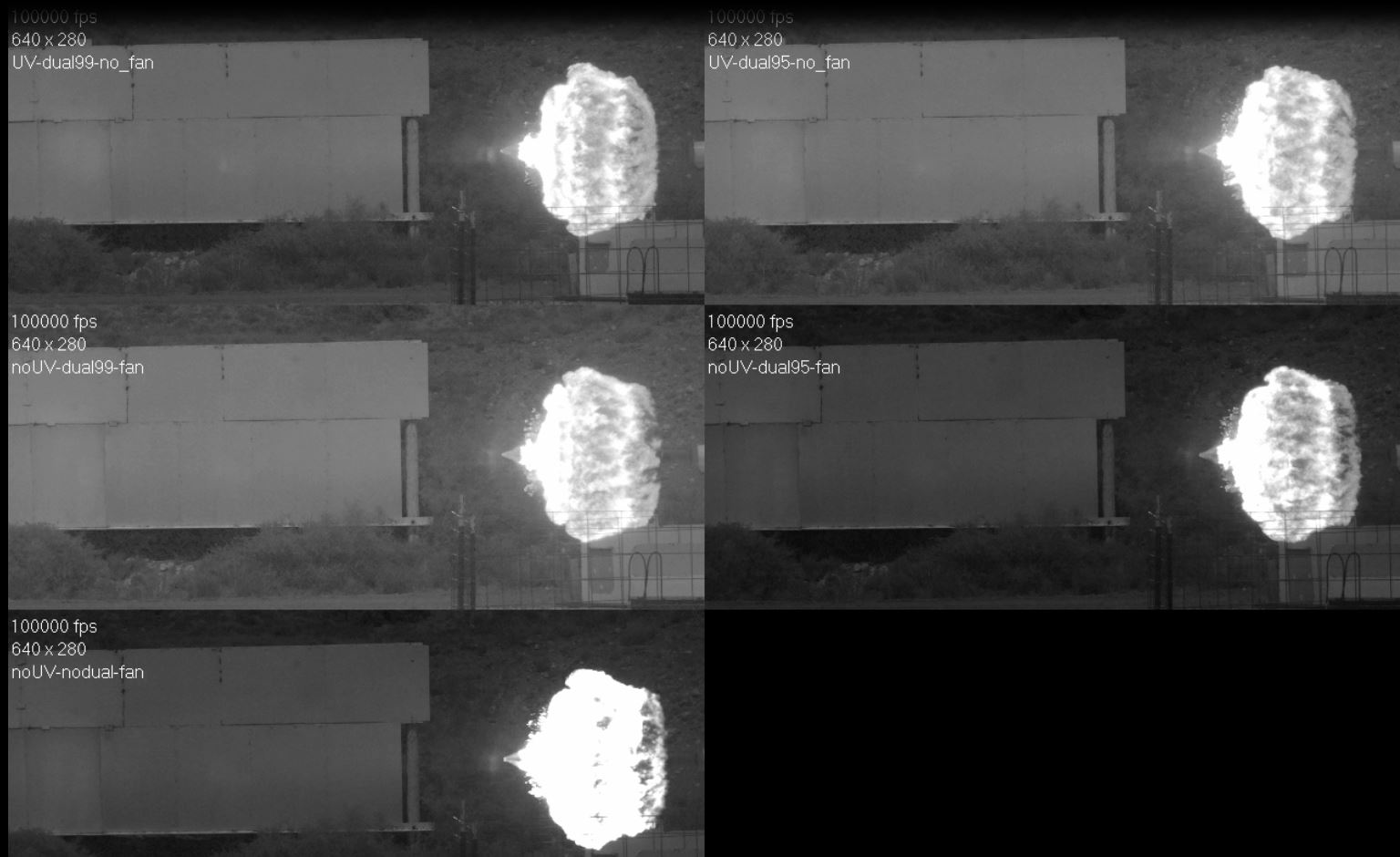If you have ever tried to image a high speed explosion you have probably encountered image saturation. Due to the high dynamic range of an explosion event your camera is almost guaranteed to saturate. Saturation is when the range of values a pixel can register, 0 to 255 for the 8-bit case, reach their highest value of white and can do longer gather information. Most attempt to solve the saturation problem by closing their camera’s aperture as far as possible. However, now they have no image until the explosion occurs and can still saturate the image.
Solving saturation with dual slope shutter
One way InnoSolve solves the saturation problem is by using a dual slope shutter. The effect of a dual slope shutter can best be explained by example. The image below shows 5 different firings of an ABRIMS tank main gun. All firings were sampled at 100,000 frames per second using a Photron SA-Z.

InnoSolve Solutions
The firing in the lower left was acquired using no dual slope shutter. All other firings were acquired using various levels of dual slope shutter, UV filtering, and camera fan settings. The impacts of the camera fans and UV filtering will not be discussed in this post. Notice how saturated the fireball becomes. Significant amounts of information is being lost due to the saturated image. This does not have to be the case. For example the upper left image was acquired with 99% dual slope shutter and preserves nearly all the information contained in the fireball. InnoSolve readily uses dual slope shutter capabilities to deploy our quantitative imaging techniques.

